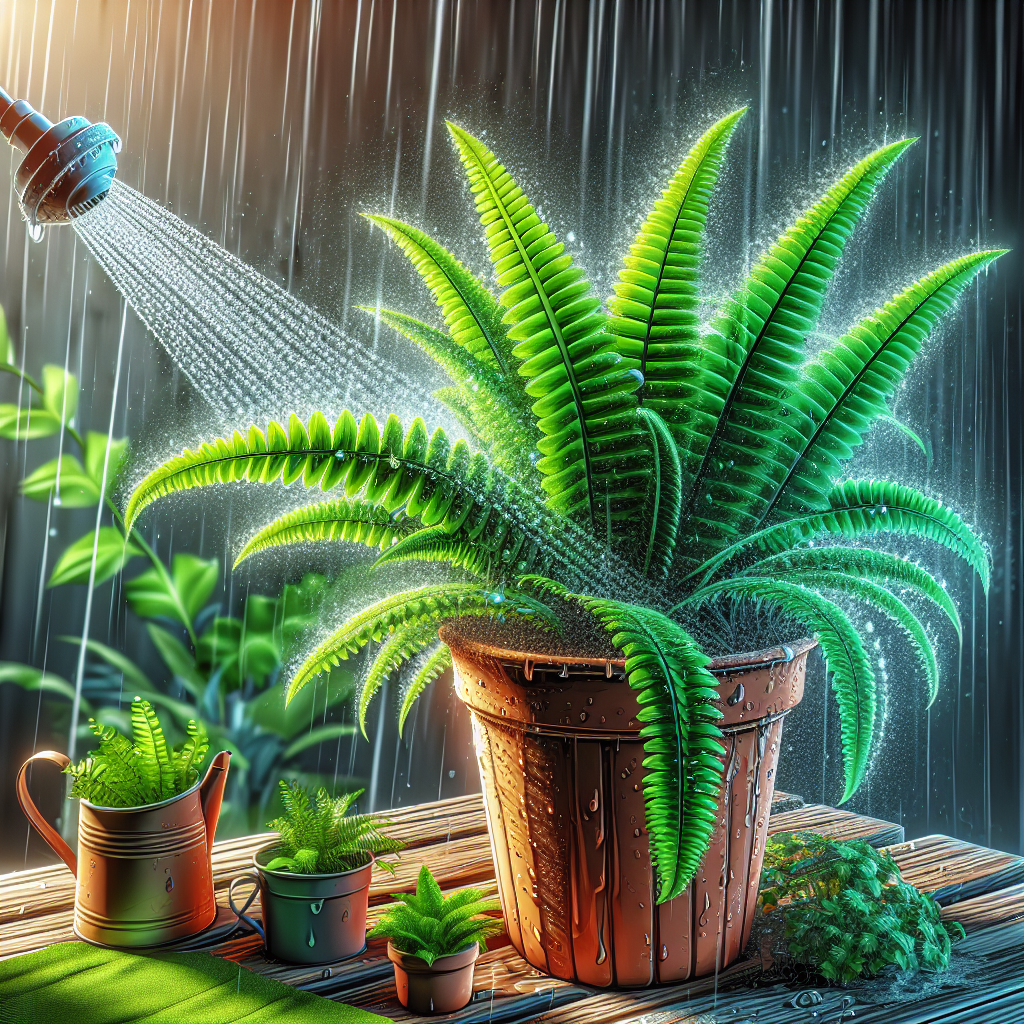Container gardening is a popular method of growing plants in urban areas, on balconies, patios, or even indoors. Many different types of plants can thrive in containers, including flowers, herbs, vegetables, and even ferns. Ferns are particularly well-suited to container gardening due to their unique characteristics and preferences when it comes to watering. In this article, we will explore why ferns love slow drip systems in container gardening and delve into the benefits of this watering method for these beautiful and versatile plants.
**The Benefits of Container Gardening for Ferns**
Container gardening offers many advantages for ferns compared to traditional garden beds. One of the main benefits is that containers allow for more control over soil conditions such as drainage and moisture levels. Ferns prefer well-draining soil that retains moisture but does not become waterlogged. In a container, you can choose the perfect potting mix for your ferns and ensure that the soil drains properly to prevent root rot.
Another advantage of container gardening for ferns is the ability to move them around easily to find the ideal growing conditions. Ferns thrive in indirect light with high humidity levels, so containers can be placed in shaded areas or near a humidifier indoors. This flexibility allows you to create the perfect microclimate for your ferns regardless of where you live.
**Why Ferns Love Slow Drip Systems**
Ferns are native to moist, humid environments such as tropical rainforests where they receive regular rainfall throughout the year. To mimic these natural conditions in a container garden, it’s important to provide consistent moisture without overwatering. Slow drip systems are an excellent way to achieve this balance for ferns.
Unlike traditional watering methods such as overhead sprinklers or hand watering with a hose, slow drip systems deliver water directly to the root zone of plants at a controlled rate. This helps prevent water wastage and allows the soil to absorb moisture gradually without becoming saturated. For ferns, which have delicate roots that are sensitive to sudden changes in moisture levels, slow drip systems provide a consistent supply of water that mimics their natural habitat.
In addition to preventing overwatering, slow drip systems also help conserve water by reducing evaporation and runoff. By delivering water directly where it’s needed most – at the roots – you can ensure that your ferns receive adequate hydration without wasting resources. This is especially important in regions with limited rainfall or during dry periods when water conservation is crucial.
**Choosing the Right Slow Drip System for Ferns**
When selecting a slow drip system for your container garden, there are several factors to consider to ensure it meets the needs of your ferns. One important consideration is the type of emitters used in the system. Drip emitters come in various flow rates, so be sure to choose ones that deliver water slowly enough for fern roots to absorb without causing runoff or leaching nutrients from the soil.
Another factor to consider is the frequency and duration of watering cycles provided by the system. Ferns prefer consistent moisture levels, so opt for a programmable timer that allows you to customize watering schedules based on your specific conditions and plant needs.
Additionally, consider installing a pressure regulator and filter in your slow drip system to ensure proper functioning and prevent clogging from debris or mineral buildup in your water source. Regular maintenance and monitoring of your system will help keep it running smoothly and provide optimal hydration for your ferns throughout the growing season.
**FAQ: Frequently Asked Questions about Fern Care**
1. How often should I water my fern in a slow drip system?
– Watering frequency depends on factors like temperature, humidity levels, pot size, and soil type. Monitor soil moisture regularly by checking if the top inch feels dry before watering again.
2. Do ferns need fertilizer when using a slow drip system?
– Yes! While slow drip systems provide consistent moisture, they don’t supply nutrients like fertilizer does. Use a balanced liquid fertilizer diluted at half strength every 2-4 weeks during active growth periods.
3. Can I use tap water with my slow drip system?
– Tap water may contain chlorine or other chemicals harmful to plants over time. Consider using filtered or rainwater for healthier fern growth.
4. What should I do if my fern leaves turn brown or crispy?
– Browning leaves may indicate underwatering or low humidity levels. Increase watering frequency or mist leaves regularly with distilled water.
5. Are all fern species suitable for container gardening with a slow drip system?
– While many common indoor fern species thrive in containers with proper care, some may have specific requirements not met by standard setups like those suited only outdoors; research individual plant needs before purchasing.
In conclusion, incorporating slow drip systems into your container gardening routine can benefit not only fern growth but also overall plant health by providing consistent moisture levels while conserving resources like water and minimizing runoff risk from over-irrigation via conventional methods like overhead spraying; remember always check correct flow rates compatible with plant needs such as those suited specifically towards tropical natives enhanced due replications observed responses toward chosen setup discussed throughout guide above!














